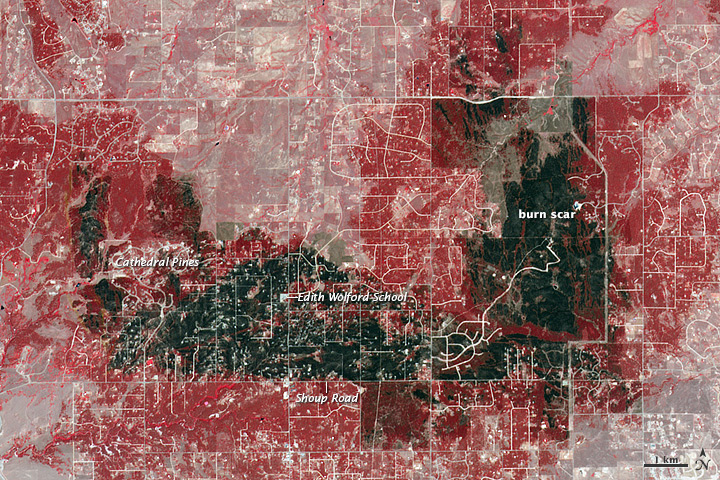Topic 2:
What is Ecology?
Ecology in the News:
The fire charred more than 14,000 acres, killed two
people, destroyed 509 homes, and devastated a wooded
suburb of Colorado Springs.
Astronaut’s view of Colorado fires
This image of the Black Forest fire’s burn scar was
acquired by NASA’s Terra satellite on June 21, 2013.
Vegetation-covered land is red in the false-color image,
which includes both visible and infrared light. Patches
of unburned forest are bright red. Unburned grasslands
are pink. The darkest gray and black areas are the most
severely burned. Buildings, roads, and other developed
areas appear light gray and white.
The most severe damage occurred north of Shoup Road,
but the severity varied widely by neighborhood.
Cathedral Pines, for instance, escaped largely
unscathed. Many residents of that neighborhood put rocks
around their homes, removed vegetation and dead trees
from their yards, avoided using mulch, and followed
other fire prevention strategies that helped keep flames
back long enough for fighters to save homes, the Denver
Post reported.

Photo credit: Great Basin National Incident
Management Team
This photograph, taken on June 20, shows a charred
section of Black Forest.
Announcements:
-
Remember - Moodle
site! 1st assignment:
-
Info. sheet on Moodle, due before class
Tuesday
-
Syllabus questions?
-
Long-Term Assignments for semester
- see them on Moodle
Learning Goals for
Day (...some of these could make good exam
questions...):
Ř
Define ecology & role of science
Ř
What do ecologists do?
Ř
What are the different levels or scales at which ecologists study nature?
Ř
Major groups of questions
ecologists ask:
o
Distributions of organisms (space
& time)
o
Nature of species interactions
Question 1:
Ř
What is ecology?
Brainstorm and discuss
Ř
In a broad sense, Ecology is the study of Nature.
How do we books
define "nature"? Quote - Do you agree?
Tall-grass prairie ecosystem with
Silphium, or Compass Plant. (see Leopold's essay "July - Prairie Birthday")
Ecology as science. DEFINITION?
----------------> Links among important Terms!
Here is the definition we came up with:
"Understanding pattern & relationships/interactions between living organisms and
their environments."
Question 2:

Ř
What do ecologists
do?
Make observations & ask questions about them.
THEN - make predictions (or "Hypotheses")
What do you see here? What might have happened to create
this pattern?
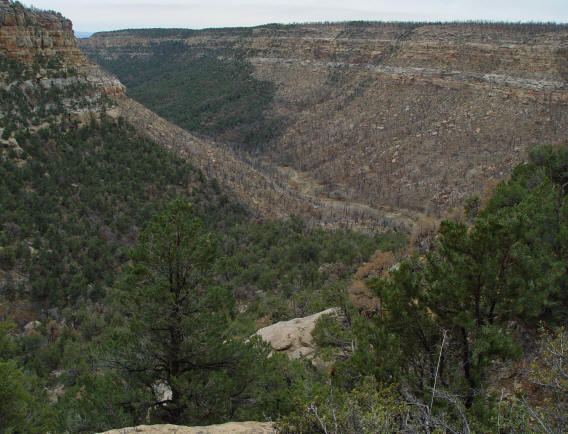
What happened here? What do you see? What could have
caused it?
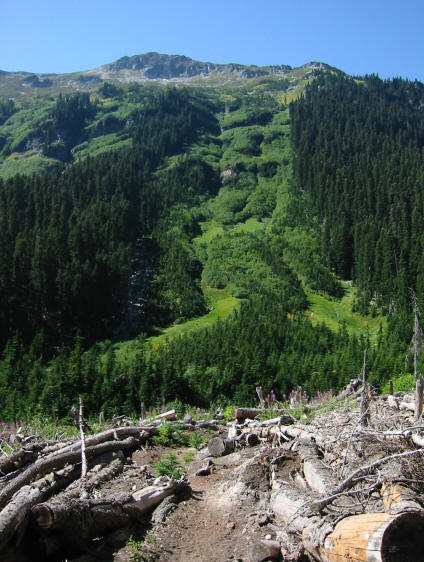
What do you see here? What might have happened to create
this pattern?
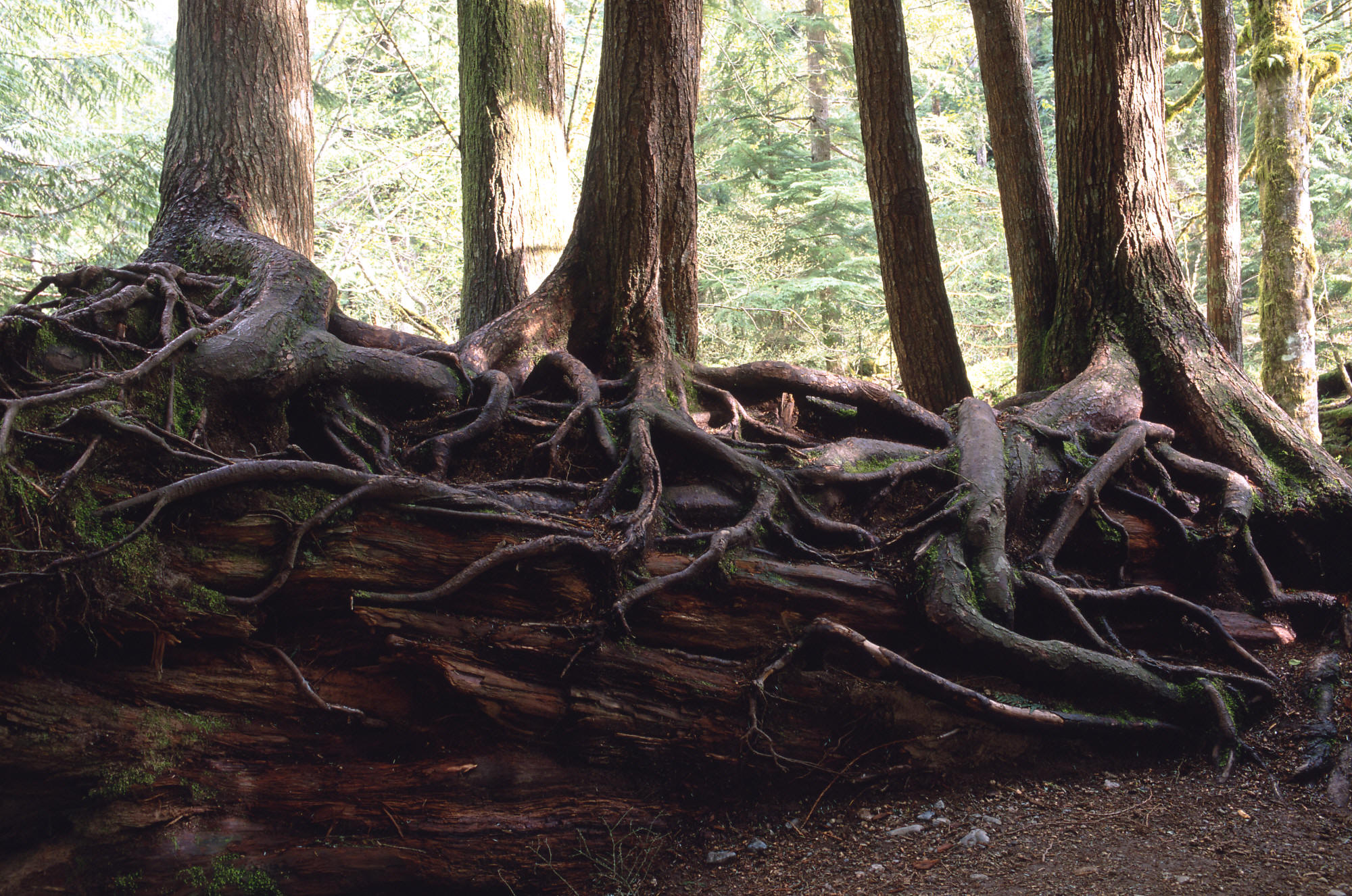
Question 3:
-
Ecologists study nature at several different scales, and at different
"levels."
-
What levels can you discern in the picture?
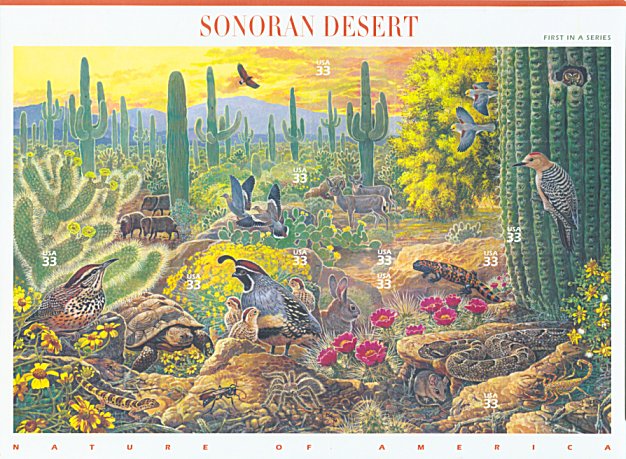
What are the 4 main levels or scales ecologists use to study
nature?
-
Organisms
-
Populations
-
Communities
-
Ecosystems
Brainstorm definitions for these four different approaches.
What is an example of a question relating to each level you can see in this
illustration?
Question 4:
Major
questions ecologists address:
What
is the nature of species interactions? Go back to the image above, and
look for examples of potential species interactions...
Community
Ecology - Worksheet
Species
Interactions
|
Effect on Organism 2 |
|
Effect on Organism 1 |
|
Harm |
Benefit |
No
Effect |
|
Harm
|
|
|
|
|
Benefit
|
|
|
|
|
No
Effect
|
|
|
|
Question 5:
Major
questions ecologists address:
How
do the distributions of organisms change over space & over time?
In
your groups, interpret this figure: how do the data presented here address
this major ecological question?
 |
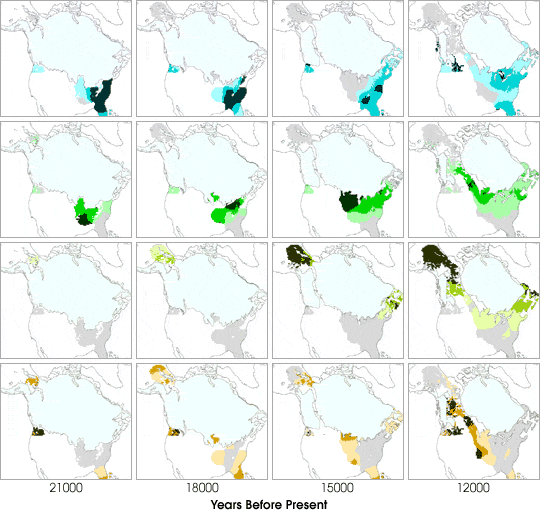
Light blue indicates position of continental glaciers
in North America during the last ice age. Other colors represent
abundance of pollen for given species in a given location -
more intense colors = more pollen. |
How
do the distributions of organisms change over space & over time?
What
factor(s) may have driven these changes?
read more:
http://earthobservatory.nasa.gov/Study/BorealMigration/boreal_migration3.html
other related links:
http://geochange.er.usgs.gov/sw/impacts/biology/pastclim/
http://biology.usgs.gov/luhna/chap9.html
Question 6:
A major
topic for our semester together:
Developing a "sense of place" & a sense of wonder for this region we live in.
"Miss
Rumphius" - the Lupine Lady - a parable for our class
-
we could all stand to think about "how we can make the world a more
beautiful place,"
-
BUT before we can do that, we need to learn about just how beautiful it
already is...
